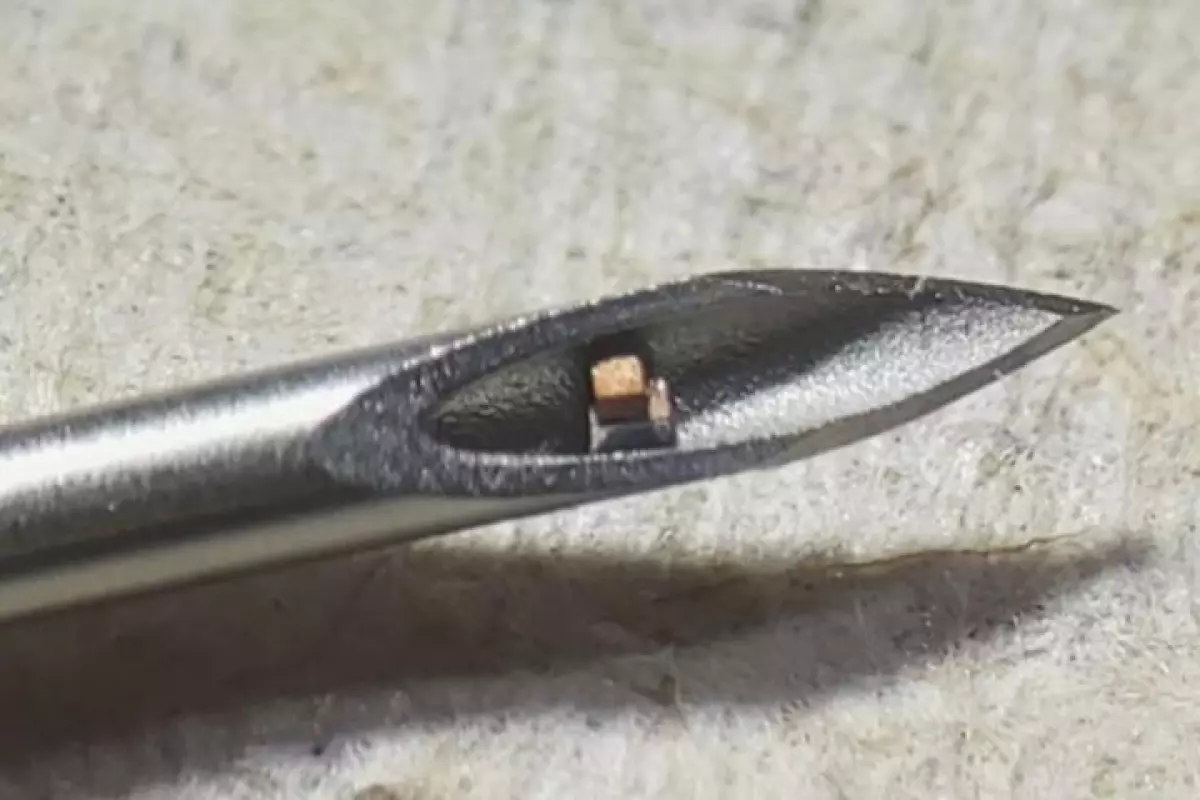Covid-19 Cepiva
- Ustvarjalec teme AndY1
- Začetni datum
Uporabljate neposodobljen brskalnik. Ta ali druga spletna stran morda ne bo prikazana pravilno.
Posodobite brskalnik ali uporabite alternativni brskalnik.
Posodobite brskalnik ali uporabite alternativni brskalnik.
Recimo, da še enkrat spregovorimo o teoriji depopulacije:
zakaj bi ravno s cepivom želeli doseči depopulacijo ljudi, ko pa se sami vsakodnevno zastrupljamo s hrano, onesnaženim zrakom, nerviranjem ..... etc ... pisanjem na Alterju (tole zadnje možnost za smrt poveča za 1,75%, dokazano)
Torej?
zakaj bi ravno s cepivom želeli doseči depopulacijo ljudi, ko pa se sami vsakodnevno zastrupljamo s hrano, onesnaženim zrakom, nerviranjem ..... etc ... pisanjem na Alterju (tole zadnje možnost za smrt poveča za 1,75%, dokazano)

Torej?
Ker je cepljenje zunanja prisila, samozastrupljanje pa lastna odločitev. 

Aja, torej imaš izbiro, kakšen zrak boš dihal in kakšno hrano boš jedel? Imaš, če si doma nekje v hribih in če ješ svojo predelano hrano.
Teoretično imaš prav, praktično pa tega skorajda ne moreš "izvajat"
Sicer pa, tudi cepljenje je lastna odločitev. Zakaj prisila?
Teoretično imaš prav, praktično pa tega skorajda ne moreš "izvajat"
Sicer pa, tudi cepljenje je lastna odločitev. Zakaj prisila?
Ne zdaj mene "napadat", ljudje (veliko njih) resnično misli, da se sami in svobodno odločajo.Aja, torej imaš izbiro, kakšen zrak boš dihal in kakšno hrano boš jedel? Imaš, če si doma nekje v hribih in če ješ svojo predelano hrano.
Če bi lahko šli na Pag, je pa to že 110% svoboda.
Kako lastna odločitev, če pa imaš na Alterju polno dokazov, da je pod prisilo? Sploh pa, če še ne veš, živimo v fašizmu.Sicer pa, tudi cepljenje je lastna odločitev. Zakaj prisila?
Aha, zaradi tega čipa na vbodenem delu kake tri dni čutiš srbenje.To je že v igri, čip dobiš istočasno s cepivom in med drugim tudi zaznava/sporoča koliko od treh let življenja po cepljenju ti še ostane:
The world's smallest single-chip system with a total volume of less than 0.1 mm3 to measure temperature inside the body and much more

Lahko pa ti ga takoj po cepljenju ena "medicinska sestra spodaj brez" posesa ven, ampak to pa pol ni več brezplačno.Aha, zaradi tega čipa na vbodenem delu kake tri dni čutiš srbenje.

Cepljenje tudi za prebolevnike, v igri 3. odmerek. Kdaj pa je potreben poživitveni?
V primeru prebolevnikov se cepljenje lahko varno odloži do šest mesecev po bolezni.
Žaba se še naprej kuha, vi pa se naprej ploskajte.Nekaj je gotovo, je na današnji novinarski konferenci o aktualnem stanju glede covida-19 poudarila nacionalna koordinatorica programa cepljenja z Nacionalnega inštituta za javno zdravje (NIJZ) Marta Grgič Vitek: čas zaščite bo skoraj gotovo treba podaljšati. Trenutno velja, da je poživitveni odmerek potreben po šestih mesecih.
Kot sem napovedal, cez pol leta vam bo valid_to cepljenja potekel in boste s tem padli med izobcence, razen ce boste spet nastavili rokico.
Nazadnje urejeno:
Prvi ti je dal 5G čip, drugi je dal password. Bogve, kaj imajo v planu za tretjega.
Par dni ti bo piskalo na varnostnih kontrolah pri izhodih iz trgovin.Evo cez 20 min imam cepljenje. Zdele grem. A morm pol kej pazit u štacunah da nisem preblizu pulta da se čip ne razmagneti?

Če se v firmi štempljate, imaš sedaj prednost, ker ti vleče že s parkirišča.Evo cez 20 min imam cepljenje. Zdele grem. A morm pol kej pazit u štacunah da nisem preblizu pulta da se čip ne razmagneti?
Bolj detaljno
Real World COVID Vaccine effectiveness (Lancet), Indoor Occupancy Limitations Questioned (MIT) Data.
COVID-19 vaccine efficacy and effectiveness—the elephant (not) in the room

COVID-19 vaccine efficacy and effectiveness—the elephant (not) in the room
Approximately 96 COVID-19 vaccines are at various stages of clinical development.1 At present, we have the interim results of four studies published in scientific journals (on the Pfizer–BioNTech BNT162b2 mRNA vaccine,2 the Moderna–US National Institutes of Health [NIH] mRNA-1273 vaccine,3 the...
www.thelancet.com
Vaccine efficacy is generally reported as a relative risk reduction (RRR). It uses the relative risk (RR)—ie, the ratio of attack rates with and without a vaccine—which is expressed as 1–RR. Ranking by reported efficacy gives relative risk reductions of 95% for the Pfizer–BioNTech, 94% for the Moderna–NIH, 90% for the Gamaleya, 67% for the J&J, and 67% for the AstraZeneca–Oxford vaccines. However, RRR should be seen against the background risk of being infected and becoming ill with COVID-19, which varies between populations and over time. Although the RRR considers only participants who could benefit from the vaccine, the absolute risk reduction (ARR), which is the difference between attack rates with and without a vaccine, considers the whole population. ARRs tend to be ignored because they give a much less impressive effect size than RRRs: 1·3% for the AstraZeneca–Oxford, 1·2% for the Moderna–NIH, 1·2% for the J&J, 0·93% for the Gamaleya, and 0·84% for the Pfizer–BioNTech vaccines.
Although the design and methodology are radically different from the randomised trial,2
Dagan and colleagues11 report an RRR of 94%, which is essentially the same as the RRR of the phase 3 trial (95%) but with an ARR of 0·46%, which translates into an NNV of 217 (when the ARR was 0·84% and the NNV was 119 in the phase 3 trial). This means in a real-life setting, 1·8 times more subjects might need to be vaccinated to prevent one more case of COVID-19 than predicted in the corresponding clinical trial.
Nazadnje urejeno:
Glej da imaš polno baterijo na telefonu ker 5g res hitro sprazni baterijo, pravijo.Evo cez 20 min imam cepljenje. Zdele grem. A morm pol kej pazit u štacunah da nisem preblizu pulta da se čip ne razmagneti?
Moje žene letnik 82, še vedno ni nihče poklical, poslal SMS-a. Ljubljana. Prijavljena povsod. Medtem, ko so kolega, ki je leto dni mlajši, povabili že 2x v maju, čeprav je že bil cepljen preko šihta.
Nazadnje urejeno:
Podobne teme
- Odgovori
- 7
- Ogledi
- 1.280
- Odgovori
- 16
- Ogledi
- 1.718
- Odgovori
- 1
- Ogledi
- 419



